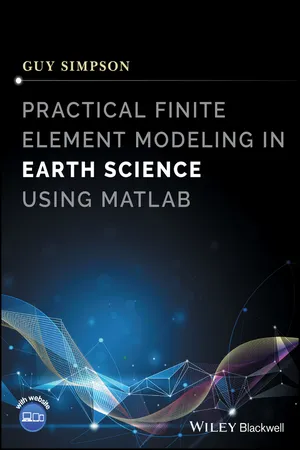
- English
- ePUB (mobile friendly)
- Available on iOS & Android
Practical Finite Element Modeling in Earth Science using Matlab
About This Book
Mathematical models have become a crucial way for the Earth scientist to understand and predict how our planet functions and evolves through time and space. The finite element method (FEM) is a remarkably flexible and powerful tool with enormous potential in the Earth Sciences. This pragmatic guide explores how a variety of different Earth science problems can be translated and solved with FEM, assuming only basic programming experience.
This book begins with a general introduction to numerical modeling and includes multiple sample Matlab codes to illustrate how FEM is implemented in practice. Textboxes have been included to provide additional detail, such as specialized Matlab usage or advanced topics. Covering all the key aspects, this is essential reading for those looking to master the technique, as well as those simply seeking to increase their basic level of understanding and appreciation of FEM.
Frequently asked questions
Information
Part I
The Finite Element Method with Matlab
1
Preliminaries
1.1 Mathematical Models
Table of contents
- Cover
- Title Page
- Table of Contents
- Preface
- Symbols
- About the Companion Website
- Part I: The Finite Element Method with Matlab
- Part II: Applications of the Finite Element Method in Earth Science
- Appendix A: Derivation of the Diffusion Equation
- Appendix B: Basics of Linear Algebra with Matlab
- Appendix C: Comparison between Different Numerical Methods
- Appendix D: Integration by Parts
- Appendix E: Time Discretization
- References
- Index
- End User License Agreement